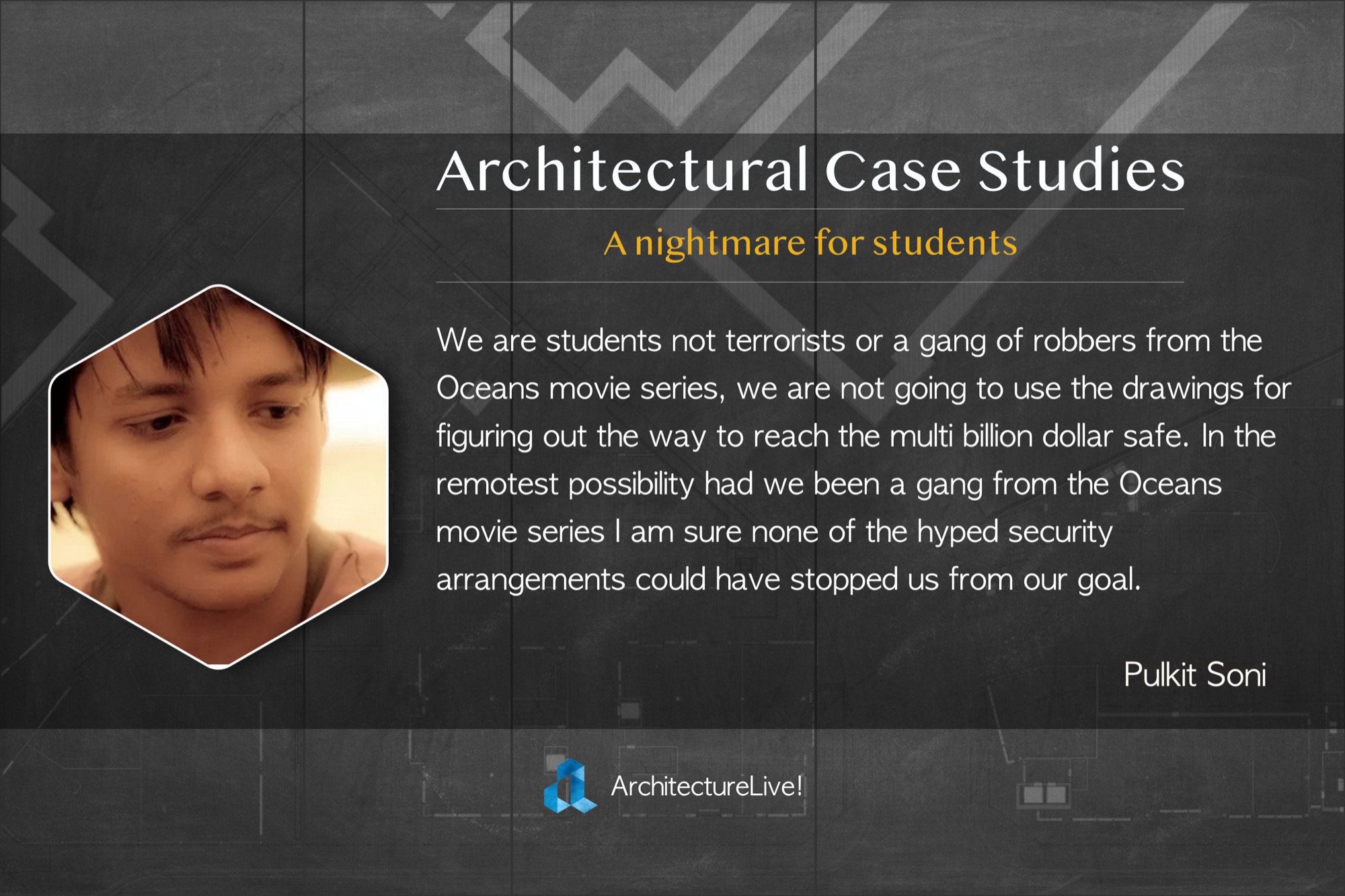
Architecture is a dynamic course, learning isn’t based just on the text books it delves deeper, farther and way beyond the scope of those bound pieces of paper. The course in an endeavour to design the future with minimizing the mistakes of the past and yet continuing the legacy of the shared being of the human civilization. This makes precedence studies or what many of us call case study an inexorable imperative. Most, if not all architects must have gone through these things in their college lives. They must have faced the hardship of getting permissions, visiting the place again and again, eating the architect’s or supervisor’s head for the drawings.
I feel disappointed to say that none of those who had faced these troubles have ever tried to facilitate the next generations of students of architecture.
We are students not terrorists or a gang of robbers from the Oceans movie series, we are not going to use the drawings for figuring out the way to reach the multi billion dollar safe. In the remotest possibility had we been a gang from the Oceans movie series I am sure none of the hyped security arrangements could have stopped us from our goal.
Some would present a different argument on a supposedly higher plane of intellect, theft of intellectual property, well I am sure asking your own conscience the question “really?” would help a lot. I don’t wish to be disrespectful or too arrogant for a student but the truth is that your design is exemplary to be studied for good or for bad but extra ordinary in certain sense. Learning doesn’t end in college, the analysis that the students do may be helpful in the future so instead of troubling the students in the name of security concerns or intellectual property theft, try and facilitate them with drawings or details and go ahead and ask for a copy of their assessment or rather be a part of a healthy discussion.
The reason why I referred to asking the inner self regarding security or intellectual property concerns is quite simple and quite evident a scene in a country like ours. X’s father is a town planner so he is able to manage the drawings, details and the permissions to study a piece of design, Y’s uncle is a renowned builder in town so she is able to manage, my dad is nothing so I require a permission from the NHAI to study a toll booth, luckily I find some Z who gets us coffee served at the same toll booth. Why are people (including architects and builders) not open to the idea of sharing what they did, how they did, what problems they faced, what solutions they ended up with etc. Most of the cameras (if not all) are meant for photographing, a grenade wouldn’t be launched on pressing the shutter. Photographing a building isn’t going to be dangerous in any way, I am doing photography for quite some time now and I can assure you that.
Still not convinced, I have a question, how annoyed are you by the process of getting permits from governments for doing a project? Must have cursed the way of working of bureaucracy a thousand times. Is the attitude of not permitting the students (or at least not in one go) any different?
It’s a sincere request from an apparently cynical student of architecture to think about it and bring about a change. For just this once say yes at the very outset of a request to study a building, for this once treat the fellow future professional with furniture details when he seeks the plans, for this once let him/her fill his her memory card with pictures of your building, for this once thank him for choosing your building before any other, for this once facilitate him.
A note from the heart of a Pulkit Soni, (then student of architecture) who feels ashamed in asking his father (a senior government official) for trivial things like seeking permission to study a building.
Though the article was written many years ago, much water has moved since then. I have graduated to become a practicing architect yet the difficulty in doing precedence studies remain. One thing I can now add is that we need to inculcate the culture of facilitating case studies not just for students but practicing professionals as well. Mutual learning helps the fraternity grow.

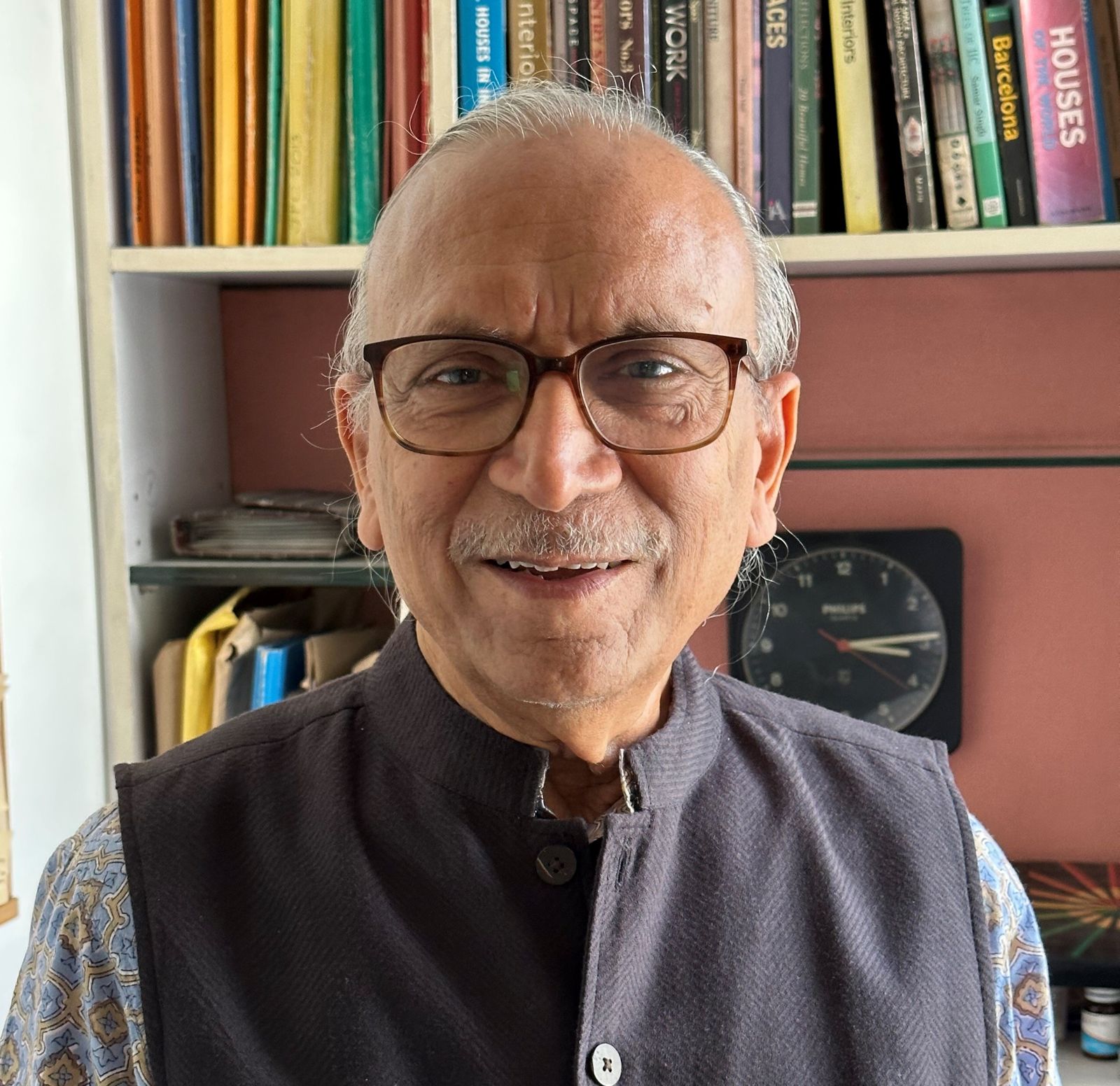
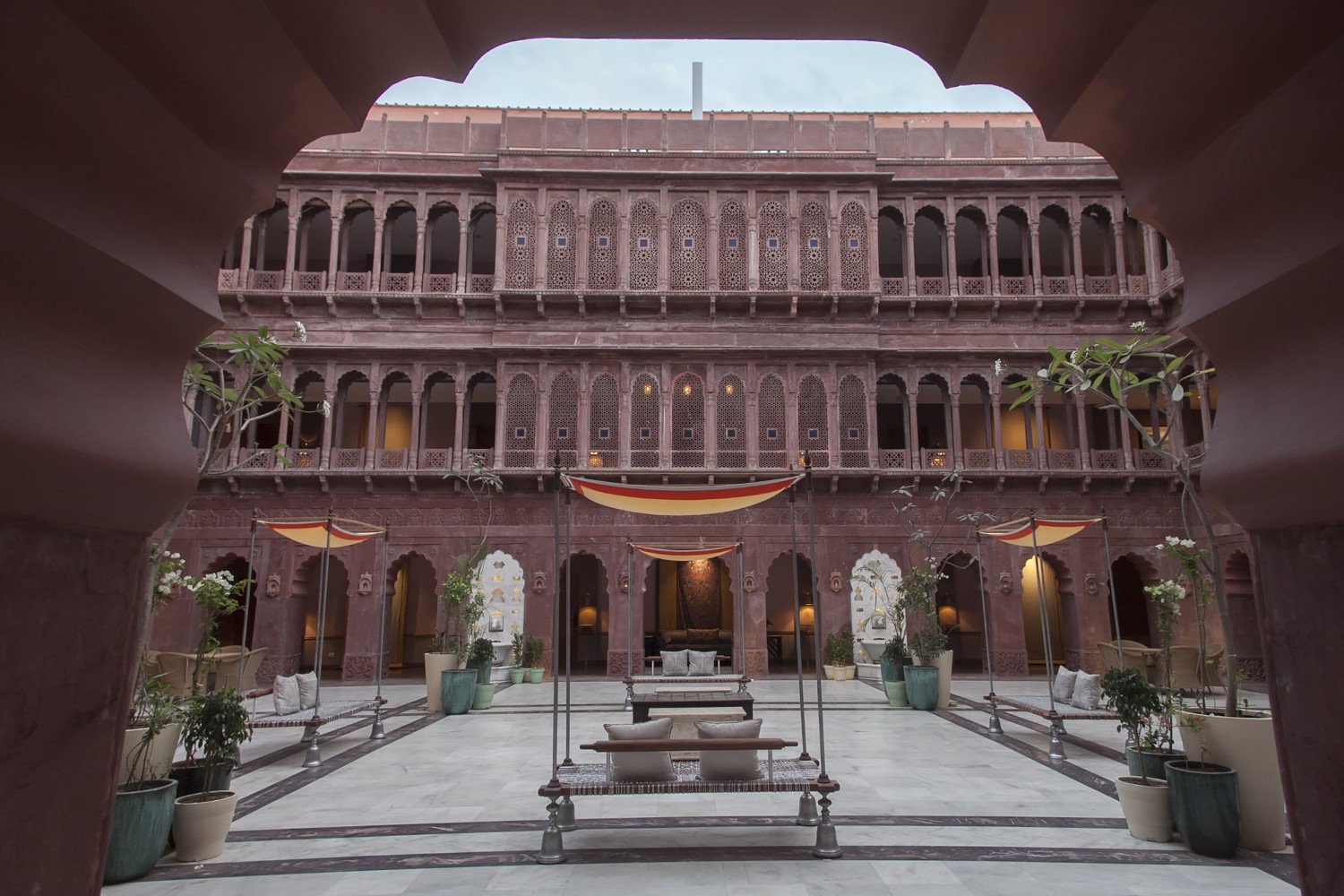
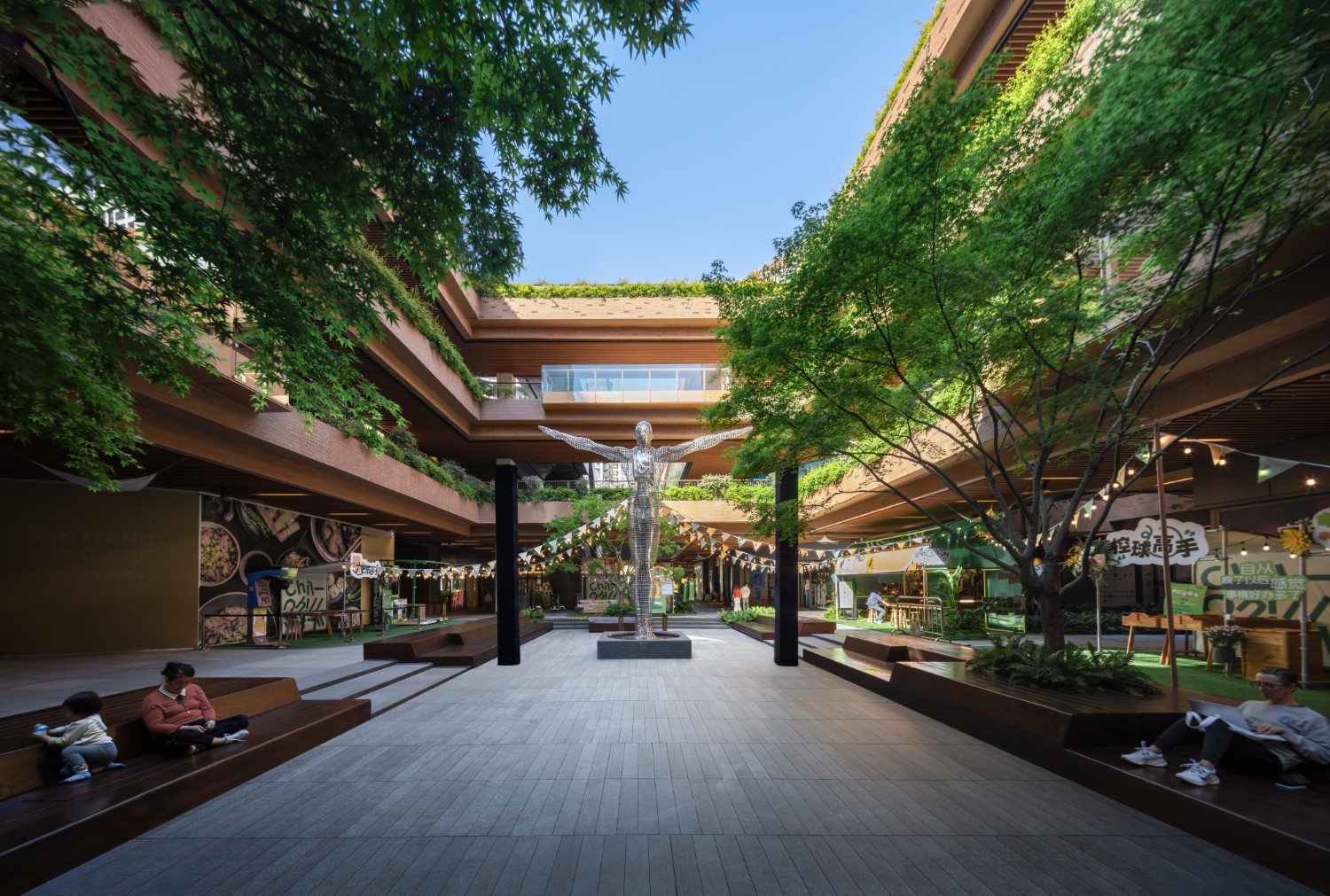
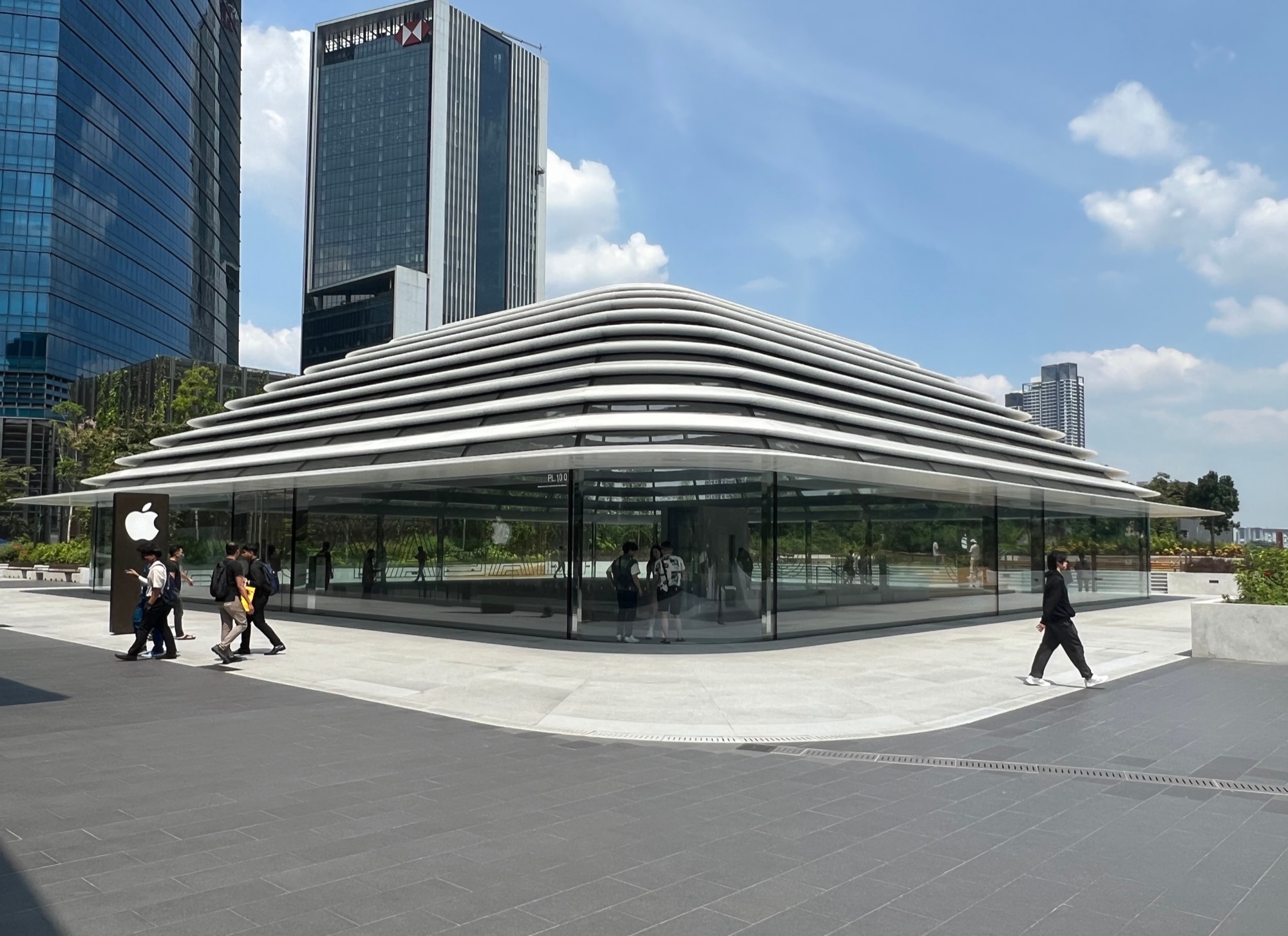
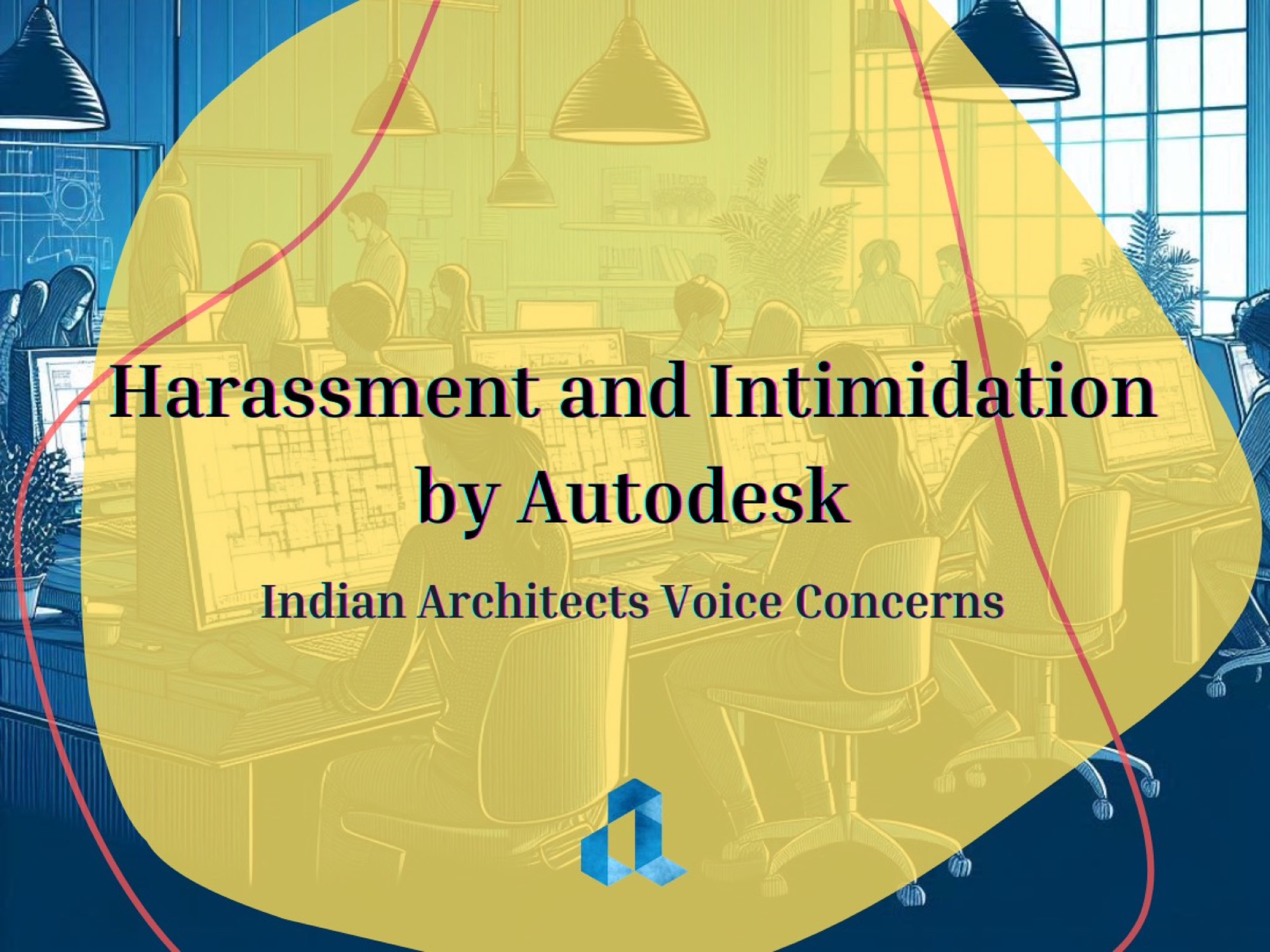
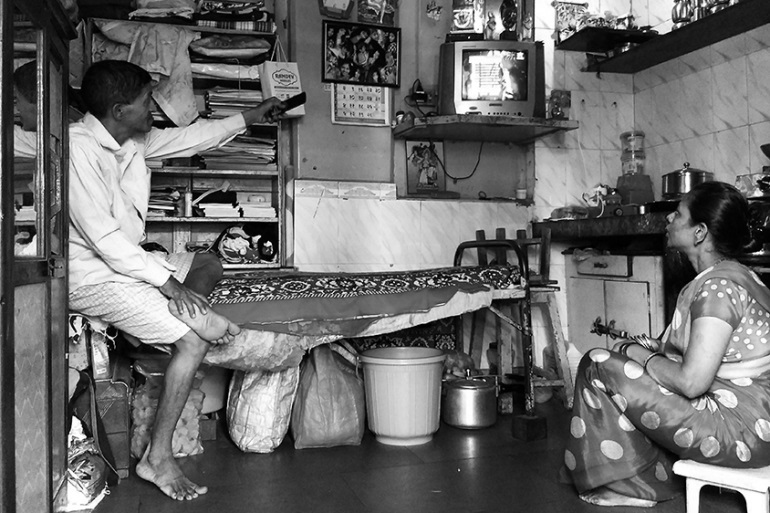

One Response
One of the reasons why access to buildings to students is avoided is insincerety of students. The authorities of the building are also sceptical of students behaviour. Students need to learn how to behave in and around the building to be studied. Well disciplined and studious students get all cooperation from Authorities.